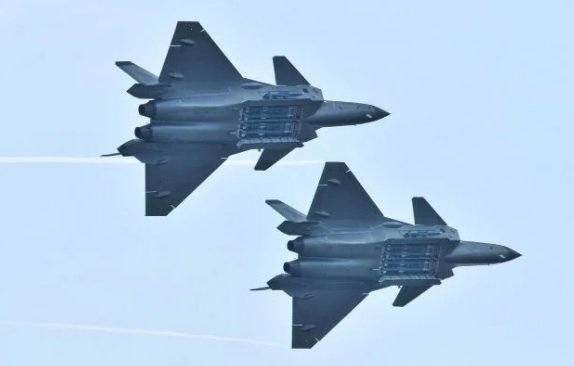China is making bold strides in air, sea, and cyber warfare capabilities, and the recent unveiling of its sixth-generation stealth fighter—the J-50 “Shenyang”—signals a new phase in the country’s military ambitions.
Developed by Shenyang Aircraft Corporation (SAC), the J-50 represents a major leap in China’s defense technology. Indian media, citing satellite imagery, suggests that China is now openly positioning itself to challenge U.S. air dominance.
According to IDRW reports, the J-50 is being developed as a stealth-first, AI-integrated, networked war platform capable of operating as a flying command center. Military analysts believe the aircraft could achieve operational status by 2030, though recent developments hint that Beijing may fast-track its deployment.
Nicknamed “Divine Shadow,” the J-50’s design emphasizes full-spectrum stealth—capable of evading not just radar but also infrared, electronic, and AI-based detection systems. Its aerodynamic structure appears to borrow from both the F-22 Raptor and the B-21 Raider, highlighting China’s attempt to merge cutting-edge technologies for next-gen warfare.
What truly sets the J-50 apart is its potential AI-driven swarm drone command capabilities. It can reportedly act as a central node in combat, guiding autonomous drones mid-air. Defense experts speculate that it might also be armed with high-end weapon systems, including the DF-ZF hypersonic glide vehicle and KD-21 missiles.
In addition, reports suggest the J-50 may incorporate advanced features such as quantum radar, directed energy weapons, and seamless integration with China’s joint theater command network, essentially transforming it into an “aerial brain” capable of coordinating multi-domain operations.
This stealth jet is seen as China’s direct counter to America’s F-22 Raptor and the upcoming NGAD (Next Generation Air Dominance) fighter jet, which the U.S. recently tasked Boeing with developing. Analysts believe the J-50 could serve as a critical asset in asserting dominance across sensitive regions like the South China Sea, Taiwan Strait, and the Indian Ocean.
For India, the emergence of the J-50 poses strategic concerns, particularly in areas such as Arunachal Pradesh and along the Line of Actual Control (LAC). Compared to India’s Su-30 MKI and Rafale fleets, the J-50 is expected to surpass them in stealth, range, and integrated warfare capabilities.
Furthermore, its ability to potentially strike U.S. Indo-Pacific bases and carrier strike groups fits squarely within China’s Anti-Access/Area Denial (A2/AD) doctrine—an approach aimed at limiting adversary movement in key maritime zones.
The J-50 is believed to be a central component of China’s emerging “Integrated Deterrence” strategy—combining military, cyber, and economic capabilities to reshape power dynamics on the global stage.
Though details remain tightly guarded, the sudden release of satellite images and footage of the J-50 is being interpreted by some analysts as a deliberate act of psychological warfare, projecting power while maintaining strategic ambiguity.
With the J-50, China is signaling its transition from a defensive posture to a force capable of power projection and global reach.










